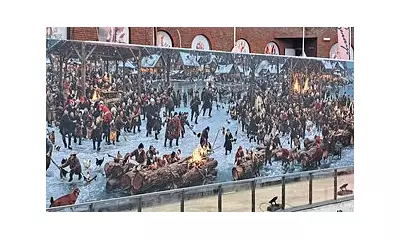
A groundbreaking robotic system is set to transform the restoration of ancient Roman frescoes in Pompeii, giving a new lease of life to priceless artefacts shattered by the Second World War and the eruption of Mount Vesuvius.
The RePAIR Project: A Technological Leap
Developed under the EU-funded RePAIR project, this innovative technology combines sophisticated image recognition, artificial intelligence, and ultra-precise robotic hands. The system aims to dramatically speed up the traditionally slow and painstaking work of archaeological restoration.
Launched in 2021 and coordinated by Venice's Ca' Foscari University, the initiative was officially showcased at the Pompeii archaeological site on Thursday. The site's director, Gabriel Zuchtriegel, explained that the project originated from a pressing need to reassemble fresco fragments destroyed during the Second World War.
How the Robotic System Works
The robot employs twin arms fitted with flexible hands in two sizes and advanced vision sensors. This allows it to identify, grip, and assemble fragments without damaging their delicate surfaces.
Researchers have focused on frescoes preserved in a fragmentary state within Pompeii's storerooms. These include two large ceiling paintings damaged during the initial volcanic eruption in AD 79 and later shattered by wartime bombing, as well as frescoes from the 'House of the Gladiators' which collapsed in 2010.
During this initial testing phase, replicas were used to avoid risking the original artefacts. While robotics teams designed and built the physical system, experts in artificial intelligence and machine learning developed complex algorithms to reconstruct the frescoes. These algorithms can match colours and patterns that may be invisible to the human eye.
Solving History's Most Complex Jigsaw
Experts describe the task as similar to solving a giant, multi-layered jigsaw puzzle with significant additional challenges, including missing pieces and no reference image of the final composition.
Marcello Pelillo, the Venice university professor coordinating the project, offered a vivid comparison: "It's like you buy four or five boxes of jigsaw puzzles. You mix everything together, then you throw away the boxes and try to solve four or five puzzles at the same time."
Researchers are confident that this robotic archaeology technology could eventually transform restoration practices at heritage sites across the globe, offering hope for other fragmented historical treasures.





